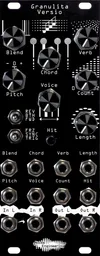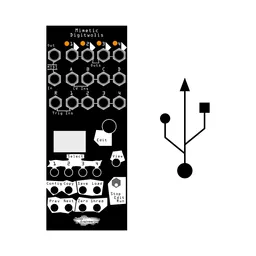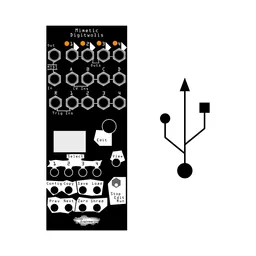Today, we have some great news for you: there’s a new Versio firmware! Polydactyl Versio is a Eurorack multiband dynamics processor designed for both single-instrument timbral processing and mix cohesion.
The module is shipping now, and the firmware is available to Versio owners for free via our Customer Portal. We’re also releasing Tymp Legio, a 6 HP drum voice on the Legio platform – more about that next week, but it’ll release at the same time.
Head to our webshop or your favorite retailer to order yours now, or read on to learn more about what Polydactyl can do for you (spoiler: it can make everything sound extra awesome).

What is multiband dynamics processing?
Polydactyl Versio was designed as a complementary counterpart to our recently released Librae Legio. Multiband processing takes a sound, splits it up into multiple frequency bands, and applies processing individually to each band. Then, the bands are mixed back together, and you get a different result than if you were applying the same process to the entire frequency band. Both single-band and multiband processing have their uses, and they’re good at slightly different things, which is why we decided to release Polydactyl Versio along with Librae Legio.
If you’ve used our Seca Ruina or Ruina Versio modules, you’ve already heard multiband processing: they both use multiband splitting to apply distortion to individual bands. PV does the same thing, just with expansion and compression!
In a previous post on the blog, we discussed the dynamics processing techniques used in Librae Legio. PV uses a similar control structure to perform expansion and compression, but it applies them to three separate frequency bands. That means that, for instance, you can expand the high end but compress the lows and the mids (a very useful technique for livening up drum loops), or heavily compress the midrange and leave the lows and highs untouched (a process that can sound fabulous on basslines). The bands are also adjustable: the top switch controls where the cutoff points are so you can adjust your processing to best suit your source material.
We designed PV with the idea of using it for changing the timbre and dynamic structure of a single sound, so PV can get pretty extreme. But PV can also do gentle processing on the master bus: multiband compression and expansion is a common tool in mixing and mastering. Putting PV at the end of your patch is a useful way to subtly adjust the timbre of your entire patch and bring everything together.
Noise gating, limiting, and saturation
Polydactyl also includes some processing and controls that affect the whole signal. The optional noise gate can help eliminate any noise that’s been accentuated by heavy compression. There’s also a limiter on the sum of the bands that keeps them from getting out of control, even if the levels are turned way up.
Lastly, the saturator is applied to the individual bands and the mix of all three bands, and it can go from bypassed when fully counterclockwise to subtle warmth to complete destruction as it’s turned up.
Oh, and of course, there’s an FSU button. Press it to max out all the controls and really add some excitement to your patch!
The backstory: BTS of Polydactyl Versio
We’ve got a whole lot of Versio firmware concepts in various states of development, from notes in a notebook to near-complete ideas that just need some tweaking. In the last few months, we’ve been kicking around some pretty amazing concepts, and we wanted to put something together for a new release.
One of the key facets of Noise Engineering is that we don’t release a product until it’s ready – if we’re not loving something, it doesn’t go out until we’ve made it perfect. We’d been discussing one firmware concept for a while, and our intention was to get that ready to go out for this release. However, countless design discussions and workflow conversations later (read: we all had different ideas of how it should work), and we still didn’t have something that we were all really excited about. We decided to pause development on that top-secret idea and focus our attention somewhere else – don’t worry, we’re still working on it, it’s just not quite ready yet.
We’d been talking about a multiband dynamics processor for a while, and after some discussion we realized that we had pretty much developed the algorithms to make one already. We initially tried it out with the four-band splitter from Ruina Versio, but decided that three bands worked better for this particular concept both in sound and for the Versio form factor. The core Librae dynamics processing was dropped onto the individual bands, and we had a prototype.
Normally, when we try out a new firmware, there’s lots of tweaks to be made, adjustments to be had, and sometimes whole parameters are replaced with new concepts. This time, though, we all tried it out and loved it immediately. A couple of chats were had about just how much saturation was enough saturation, and we were off: we knew we had a winner since we all rearranged our systems to fit it in that very weekend.
We hope you’ll enjoy Polydactyl Versio as much as we do. Head over to our webshop or your favorite retailer to order yours today, and come back to the blog next week to check out Tymp Legio, our new drum voice!






